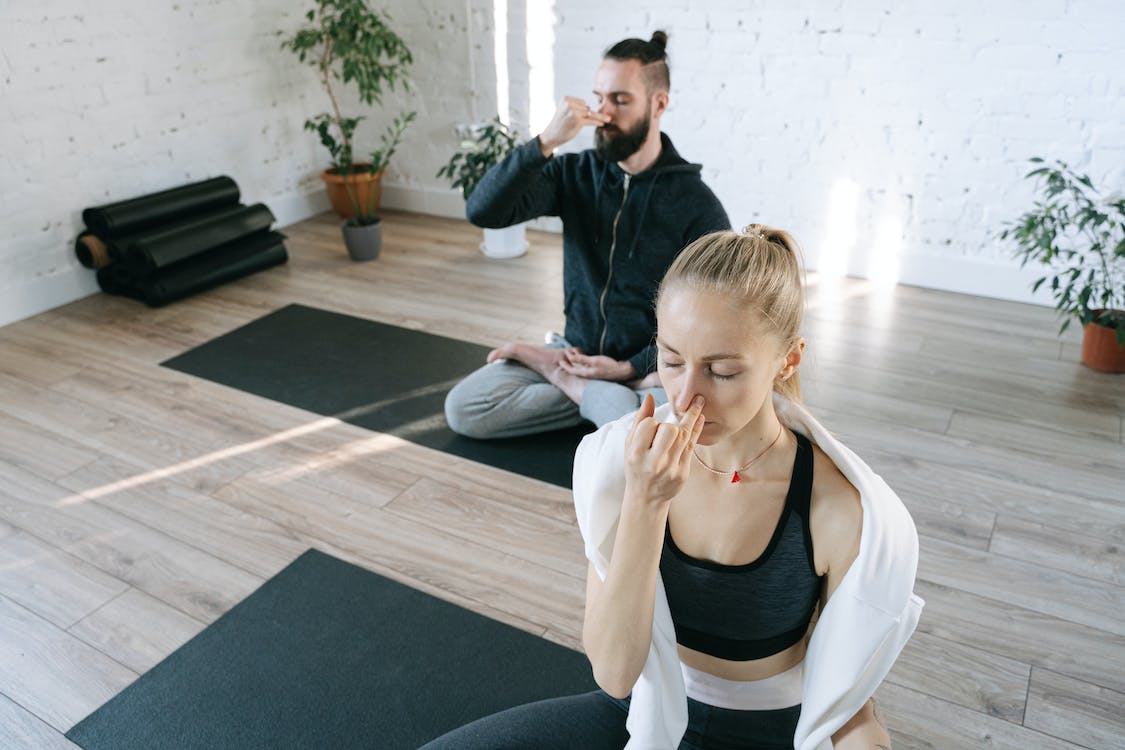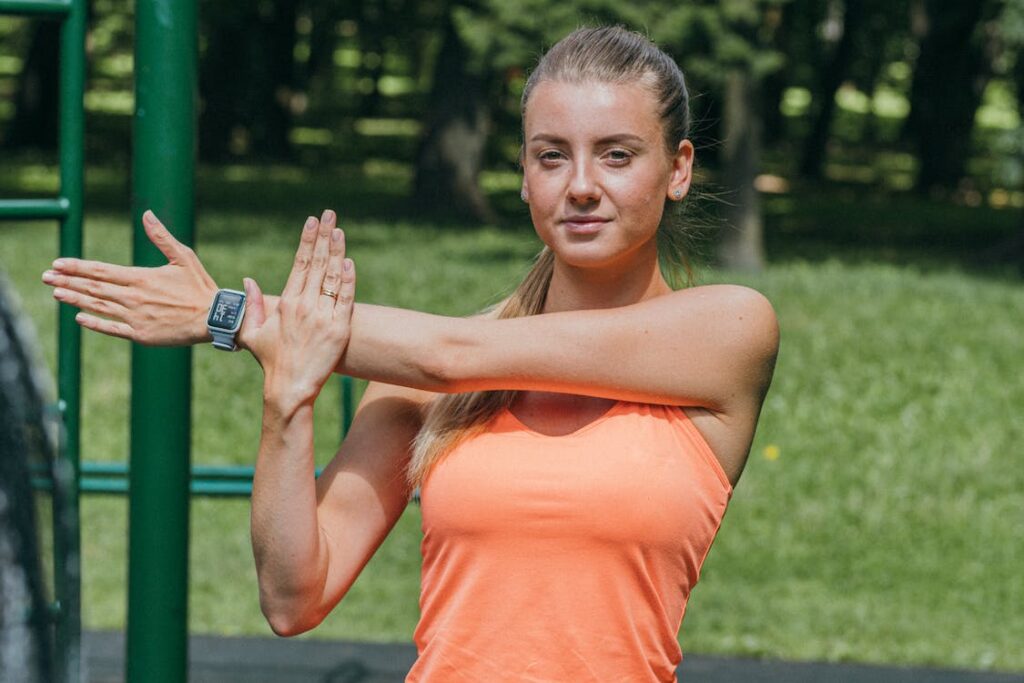To stay in shape, we are supposed to practice at least half an hour of sport daily. Don’t get us wrong; it’s not a question of exhausting ourselves but simply of educating our bodies to work regularly.
Almost one out of two people say they don’t have time to exercise, while others exercise occasionally.
It is sometimes difficult to stay in shape when your schedule does not allow it. However, there are exercises to stay dynamic and energetic. There are plenty of opportunities to exercise discreetly at the office, on public transport, and in the car!
Here are 9 quick and easy exercises to boost your daily energy.
1. Eye gym: 1 minute/day
Riddle me this: what do people who constantly work on a computer have in common? Sooner or later, they all end up going to the eye doctor! It is no secret that the screen quickly wears out the eyes and makes them tired.
To reduce this feeling of fatigue and preserve your eyesight, you must first organize your work environment:
Do exercises from time to time to move your eye muscles, which remain immobile when staring at the screen and can be painful if they remain immobile for a long time:
Focus your eyes on a fixed point above the screen.
Look left, right, up and down several times in a row.
Other tips:
Don’t work in the dark: always have a source of natural and artificial light in the room.
Adjust your screen correctly
On a black background: decrease the brightness until you get a perfect black.
On a white text on a black background: increase the contrast to the maximum value, then decrease it until you get a pristine white.
Take regular breaks.
Orient your screen with your back to the window to limit reflections.
2. Breathing exercises: 10 minutes/day

Stress and lack of sleep have a direct influence on fatigue and health. To avoid a breakdown, it is important to reoxygenate the body. To do this, relaxation and breathing techniques can help the body recover.
Give yourself at least 10 minutes to learn to breathe again, even while driving or watching television.
The basics
Breathe through your nose, lift your belly as it fills with air, and blow deeply through your mouth.
Repeat the operation about ten times.
For neck pain
With your hands at your side, hold your head to your shoulder, try to push down the other shoulder, and perform the above breathing movement simultaneously.
Repeat this exercise five times on each side.
For shoulder muscle pain
Cross your arms along your chest and pull outward while breathing well.
Repeat about ten times.
Against back pain
Stand up and stretch your spine as much as possible, as if you were trying to gain a few inches.
Don’t forget to breathe during the exercise. Release and repeat.
To build abs
Breathe in deeply, expand your chest and hold your breath. Contract your abs as hard as you can.
Place your hand in front of your belly, fingers forward, and touch your abs with your fingers, then release the inhaled air. Repeat the exercise about ten times.
3. Discreet exercise at the office: 10 minutes/day
You can use your chair and breaks to exercise at the office discreetly. And it works! Don’t forget to breathe deeply during your exercise.
Gluteus maximus
Sitting with your back straight and your legs together, squeeze one buttock after the other as hard as you can for 10 seconds. Keep a straight face, and no one will notice!
Abs for no reason
Sitting on a chair with your back straight, lift both feet together a few inches while contracting your abs. Stay suspended for a few seconds, then repeat several times.
Watch your balance!
To work on your calves, you can stand on your toes and stay in this position for 10 seconds before releasing and starting again.
Toned legs
Sitting at your desk with your legs together, extend your legs in a parallel suspension above the floor. Contract your abdominal muscles, hold your breath for 5 seconds, then relax. Repeat the exercise about ten times.
For this maneuver, keep your back straight. You can put your hands along the chair or on your thighs.
4. Walk 20 minutes per day!
On a daily basis, don’t dawdle, either. Don’t miss any opportunity to walk, even a few feet:
Take the stairs instead of the elevator:
To work your calves, go upstairs with your feet flexed, your toes touching the step, and your heels hanging off.
After a few sessions of hard climbing, your calves and your breath will get used to the effort, which will become easier to perform.
Walk at a good pace, with your back straight and your feet well forward.
5. Take a nap: 20 min/day
After a too-short night, fatigue is felt at work. A tired person will struggle to concentrate and remain calm in stressful situations.
To fight against fatigue, there are several solutions:
Go outside, get some fresh air, relax, and chat with your colleagues.
Take a snack break with a small snack and a drink.
Take a nap 5 to 20 minutes after lunch in a dedicated room or, if you do not have one, by lowering your seat.
Do some sports during your lunch break: dive into the local swimming pool for half an hour, or run on a carpet, the fatigue will pass from your brain to your body, and you will finish your day properly and sleep well.
6. Practice sports at lunchtime: 45 min/day
Although agreeing to “test” a new restaurant with your colleagues is more tempting than exercising, the lunch break remains an excellent opportunity to practice sports, especially if your family occupies your evenings and weekends.
In addition, it helps to reduce the feeling of fatigue observed in the early afternoon. The key to success is regularity: impose 1 to 2 sessions per week on yourself, and don’t let go of the rhythm.
Sport outside: go alone or with your colleagues on a one-hour break to a complex less than five minutes away. You can let off steam for half an hour and return for a quick, well-deserved lunch.
Workout inside the company: take advantage of the facilities provided by your employer.
7. See an osteopath: 1 hour/year
Osteopathy can help you feel better, especially for people under stress.
A consultation lasts from 1 to 3 hours. It is recommended at least once a year for everyone. This consultation will benefit your body if you are paying the price of a sedentary and particularly stressful life.
Osteopathy helpful exercises relieve, among others, muscular, articular, and skeletal pains, migraines, insomnia, and stress.
8. The last tip is to be in shape
Pay attention to your diet! Diet remains an essential element to keeping in shape. Poor diet = poor form, necessarily.
Keep a varied and balanced diet. The right balance: 25% of calories in the morning, 40% at noon, and 35% in the evening. Fast food should be avoided.
Don’t forget to eat breakfast in the morning and drink at least 1.5 liters of water daily.
Eat foods containing vitamin C: kiwi, lemon, bell pepper, broccoli, strawberry, orange, etc.
Don’t overindulge in sugars, fats, and alcohol: avoid the vending machine like the plague…
Limit your consumption of sandwiches and give yourself a healthy and balanced meal.
Limit your tobacco consumption. But also: exercise during your lunch break and maintain a restful sleep rhythm.
Adjust your chair
The office chair remains an essential part of daily well-being. If it is not adjusted correctly, it can cause back pain, neck pain, and muscle tension. Choose an ergonomic chair. This means that you can adjust the seat and the height according to your morphology:
The height: feet flat on the floor, forming a 90° angle.
The backrest: the back should be straight, well at the bottom of the backrest, but the backrest should remain tilted and not static.
The elbows: the elbows must be supported by armrests or on the desk and not hanging in the void.
Create a Zen atmosphere
Work environments are not always conducive to relaxation. As much as possible, you should curb these disturbances:
- The light should not dazzle you.
- External noise can be reduced by listening to soft music or using earplugs.
- The temperature should not exceed 19°C, so bring light clothing if necessary.


